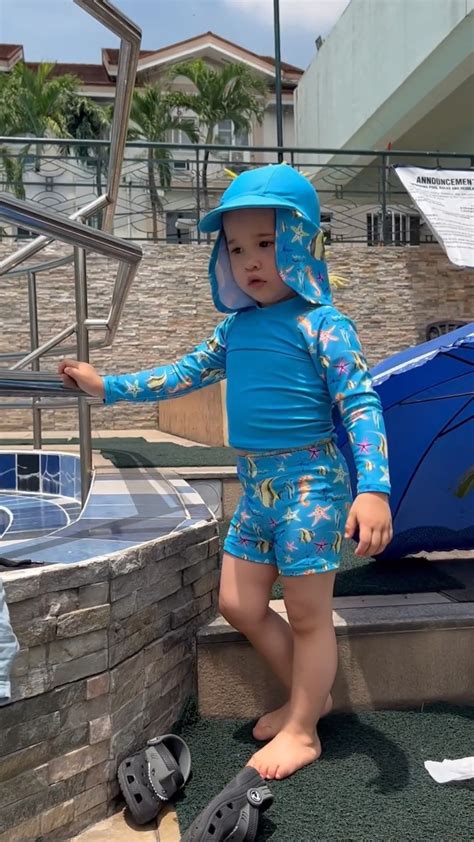
A TikTok creator’s query about seemingly normal situations that feel exclusively designed for men has resonated deeply with women online, triggering a flood of shared experiences and highlighting gender disparities in everyday life.
A TikTok video posted by user @TheWildeBrand, posing the question, “What is something that feels like it was designed for men, and men are like, ‘What are you talking about? It’s totally normal,'” has ignited a viral conversation among women sharing frustrating encounters with products, spaces, and societal norms seemingly tailored to a male default. The responses, ranging from ill-fitting clothing to safety concerns in public spaces, underscore persistent gender inequalities and spark discussions on how these disparities impact women’s daily lives.
The video, which has garnered significant attention, prompted women to detail instances where they felt overlooked or disadvantaged due to gender-centric design and assumptions. A common theme emerging from the comments centers on clothing. Many women reported difficulties finding properly fitting professional attire, with items often featuring impractical pockets or cuts that don’t accommodate diverse body types. As one commenter noted, the lack of functional pockets in women’s clothing forces them to rely on purses, a burden men rarely face. “The pockets in women’s pants are a joke. We’re forced to carry a purse,” one user pointed out, encapsulating the frustration experienced by many.
Beyond clothing, the conversation extended to the design of public spaces. Several women cited the temperature in office buildings as an example of male-centric design, explaining that thermostats are often set to a temperature comfortable for men in suits but uncomfortably cold for women in lighter attire. This discrepancy, often attributed to outdated thermal comfort models based on male metabolic rates, highlights how seemingly neutral settings can disproportionately affect women.
The discussion also touched on safety concerns. Many women expressed feeling unsafe walking alone at night, a fear exacerbated by the lack of adequate street lighting in many areas. “Walking alone at night is something most women think twice about, unlike many men,” one comment stated, emphasizing the gendered reality of personal safety. The need to constantly assess surroundings and take precautionary measures, such as sharing location data or carrying self-defense tools, was a common experience shared by many.
The viral TikTok thread has evolved into a broader dialogue about the subtle yet pervasive ways gender bias manifests in everyday life. The collective sharing of experiences has created a sense of solidarity among women, validating their frustrations and encouraging them to advocate for more inclusive design and policies.
One significant area of concern highlighted in the responses was the design of medical equipment and healthcare practices. Several women shared stories of medical devices and procedures that seemed primarily designed with male bodies in mind, leading to discomfort, inaccurate diagnoses, or inadequate treatment for women. The lack of representation of female bodies in medical research and training was also cited as a contributing factor to these disparities. “Even in healthcare, we see that many things are still based on male biology, and that’s a huge problem,” one commenter noted.
The conversation also extended to the realm of technology, with many women pointing out that smartphone sizes and designs often cater to larger male hands, making them difficult to use comfortably with one hand. Similarly, the design of gaming controllers and other tech accessories was criticized for often overlooking the ergonomic needs of women.
Another recurring theme was the societal expectation that women should bear the primary responsibility for childcare and household chores. Many women shared experiences of being disproportionately burdened with these tasks, even when both partners worked full-time. This imbalance, often reinforced by societal norms and expectations, can lead to burnout and limit women’s opportunities for career advancement and personal fulfillment. “It’s the invisible labor that women are expected to do without question,” one user commented, highlighting the unequal distribution of household responsibilities.
The TikTok video and its subsequent discussion have underscored the importance of considering gender perspectives in all aspects of design and policy-making. By sharing their experiences and raising awareness about these issues, women are pushing for a more equitable and inclusive world where their needs and perspectives are taken into account.
The viral trend has also spurred discussions about potential solutions to address these gender disparities. Some commenters suggested that companies and organizations should prioritize diversity and inclusion in their design teams, ensuring that a wider range of perspectives are represented. Others called for greater awareness and education about gender bias, encouraging individuals to challenge their own assumptions and stereotypes.
The online conversation has also led to calls for more research and data collection on gender differences in various fields, from medicine to engineering. By gathering more information about how men and women experience the world differently, researchers can help inform the design of more inclusive products and policies.
The impact of the TikTok video extends beyond the online world, inspiring real-world conversations and actions. Women are using the hashtag #TheWilde to share their experiences and advocate for change in their communities. The viral trend serves as a reminder that even seemingly small design choices can have a significant impact on people’s lives, and that by addressing these issues, we can create a more equitable and inclusive society for everyone.
The conversation initiated by @TheWildeBrand continues to evolve, with new examples and perspectives being shared every day. The viral trend has highlighted the power of social media to amplify marginalized voices and spark meaningful dialogue about important social issues. As women continue to share their experiences and advocate for change, the hope is that these conversations will lead to tangible improvements in the design of products, spaces, and policies that better reflect the needs and perspectives of all members of society. The discussion highlights the persistent need for awareness and advocacy to bridge the gap between design intent and lived experience, ultimately fostering a more inclusive and equitable world.
The viral trend also underscores the power of collective storytelling in bringing about social change. By sharing their experiences and connecting with others who have faced similar challenges, women are building a sense of solidarity and empowering themselves to advocate for change. The online conversation has created a safe space for women to voice their concerns and feel validated in their experiences.
The discussion also raises questions about the role of men in addressing these gender disparities. Some commenters suggested that men can play an important role by listening to women’s experiences, challenging their own biases, and advocating for more inclusive design and policies. By working together, men and women can create a more equitable and inclusive society for everyone.
The TikTok video and its subsequent discussion have served as a catalyst for change, inspiring individuals and organizations to take action to address gender disparities in various fields. The viral trend has demonstrated the power of social media to raise awareness about important social issues and empower marginalized voices. As the conversation continues to evolve, the hope is that these discussions will lead to tangible improvements in the design of products, spaces, and policies that better reflect the needs and perspectives of all members of society. The lasting impact of this viral moment lies in its ability to spark meaningful dialogue and inspire action towards a more equitable and inclusive future.
The viral TikTok trend also underscores the importance of intersectionality in understanding gender disparities. While the initial conversation focused on the experiences of cisgender women, many commenters pointed out that gender intersects with other identities, such as race, ethnicity, sexual orientation, and disability, to create unique and complex challenges. By recognizing and addressing these intersections, we can create more inclusive and equitable solutions that meet the needs of all members of society.
The online conversation has also led to discussions about the role of education in promoting gender equality. Some commenters suggested that schools should incorporate lessons on gender bias and inclusivity into their curriculum, helping to raise awareness among young people and challenge harmful stereotypes. By educating future generations about these issues, we can create a more equitable and inclusive society for everyone.
The viral TikTok trend has demonstrated the power of social media to amplify marginalized voices and spark meaningful dialogue about important social issues. As women continue to share their experiences and advocate for change, the hope is that these conversations will lead to tangible improvements in the design of products, spaces, and policies that better reflect the needs and perspectives of all members of society. The lasting impact of this viral moment lies in its ability to spark meaningful dialogue and inspire action towards a more equitable and inclusive future. It’s a testament to the enduring power of shared experience and collective action in driving social progress.
The conversation sparked by @TheWildeBrand’s TikTok video reveals that many design choices, often perceived as neutral, disproportionately affect women. This ranges from clothing design to the standard settings of office environments. The overwhelming response underlines a pressing need for designers and policymakers to adopt a more inclusive and gender-sensitive approach in their work, considering the diverse needs and experiences of all individuals. This is not merely a matter of convenience; it directly impacts women’s safety, comfort, and overall well-being.
The dialogue that has emerged provides valuable insights for manufacturers and service providers. For instance, the widespread dissatisfaction with the lack of functional pockets in women’s clothing presents a clear opportunity for designers to prioritize practicality without compromising style. Similarly, addressing the issue of overly cold office temperatures requires a reconsideration of existing thermal comfort models to better reflect the metabolic rates of women. These are just two examples of how listening to and incorporating women’s feedback can lead to more inclusive and user-friendly designs.
Beyond specific product features, the viral trend also highlights the broader issue of societal expectations and gender roles. The fact that many women feel unsafe walking alone at night reflects the persistent reality of gender-based violence and the need for greater efforts to promote women’s safety in public spaces. Similarly, the unequal distribution of childcare and household responsibilities underscores the importance of challenging traditional gender norms and creating more equitable family structures.
The TikTok video and the ensuing discussions have also spurred a renewed focus on representation and diversity in the design and technology industries. By bringing more women into these fields and ensuring that their voices are heard, companies can create products and services that better reflect the needs of all users. This includes actively seeking out feedback from women during the design process and incorporating their insights into the final product.
The viral trend has also shown the power of online communities in fostering dialogue and driving social change. By creating a safe space for women to share their experiences and connect with others who have faced similar challenges, social media platforms can play a valuable role in promoting gender equality. However, it is also important to be mindful of the potential for online harassment and abuse and to take steps to ensure that these platforms remain safe and inclusive for all users.
In conclusion, the TikTok video and the subsequent discussions have shed light on the many ways in which gender bias manifests in everyday life. By raising awareness about these issues and encouraging dialogue, women are paving the way for a more equitable and inclusive future. The challenge now is to translate these conversations into tangible action, ensuring that the needs and perspectives of all members of society are taken into account in the design of products, spaces, and policies. This requires a concerted effort from designers, policymakers, educators, and individuals to challenge their own biases, listen to women’s experiences, and advocate for change. The viral trend serves as a powerful reminder that even seemingly small design choices can have a significant impact on people’s lives, and that by addressing these issues, we can create a more just and equitable world for everyone.
Frequently Asked Questions (FAQs)
1. What was the “The Wilde” question that started the trend?
The “The Wilde” question, posed by TikTok user @TheWildeBrand, was: “What is something that feels like it was designed for men, and men are like, ‘What are you talking about? It’s totally normal?'” This simple question sparked a widespread discussion among women about everyday products, spaces, and societal norms that seem to cater primarily to men, often overlooking or disadvantaging women.
2. What are some of the most common examples of male-centric design cited by women?
Some of the most common examples include:
- Clothing: Ill-fitting professional attire with impractical or non-existent pockets.
- Office Temperatures: Thermostats set to temperatures comfortable for men in suits, but uncomfortably cold for women in lighter clothing.
- Public Safety: Lack of adequate street lighting, making women feel unsafe walking alone at night.
- Medical Equipment and Practices: Medical devices and procedures primarily designed with male bodies in mind.
- Technology: Smartphone sizes and designs that often cater to larger male hands.
- Societal Expectations: Disproportionate burden of childcare and household chores on women.
3. How does the lack of functional pockets in women’s clothing affect women?
The lack of functional pockets in women’s clothing forces them to rely on purses to carry essential items, such as phones, wallets, and keys. This can be inconvenient and even unsafe, as purses can be targets for theft. It also reinforces the idea that women’s clothing is primarily about aesthetics, rather than practicality.
4. What are the potential solutions to address gender disparities in design?
Some potential solutions include:
- Prioritizing Diversity and Inclusion: Companies and organizations should prioritize diversity and inclusion in their design teams, ensuring that a wider range of perspectives are represented.
- Raising Awareness and Education: Greater awareness and education about gender bias can help individuals challenge their own assumptions and stereotypes.
- Research and Data Collection: More research and data collection on gender differences in various fields can help inform the design of more inclusive products and policies.
- Seeking Feedback from Women: Actively seek out feedback from women during the design process and incorporate their insights into the final product.
- Challenging Societal Norms: Challenging traditional gender norms and creating more equitable family structures.
5. What impact has this TikTok trend had on the conversation about gender equality?
The TikTok trend has had a significant impact on the conversation about gender equality by:
- Raising Awareness: It has raised awareness about the subtle yet pervasive ways gender bias manifests in everyday life.
- Creating a Sense of Solidarity: It has created a sense of solidarity among women, validating their frustrations and encouraging them to advocate for more inclusive design and policies.
- Inspiring Real-World Action: It has inspired real-world conversations and actions, with women using the hashtag #TheWilde to share their experiences and advocate for change in their communities.
- Amplifying Marginalized Voices: It has amplified marginalized voices and sparked meaningful dialogue about important social issues.
- Catalyzing Change: It has served as a catalyst for change, inspiring individuals and organizations to take action to address gender disparities in various fields.









